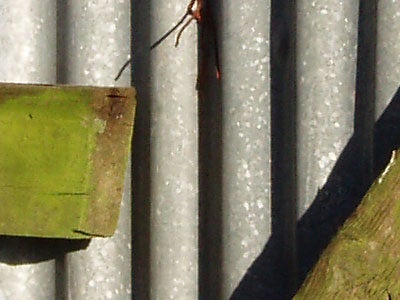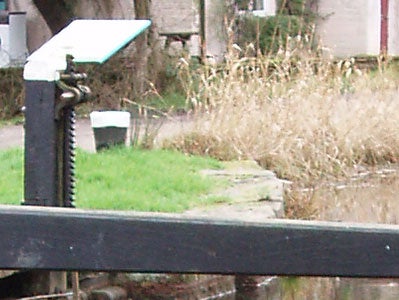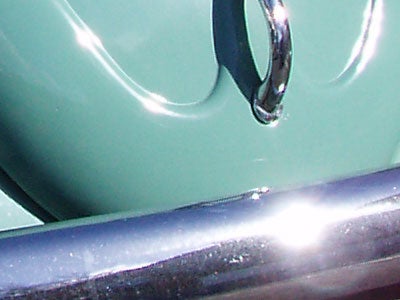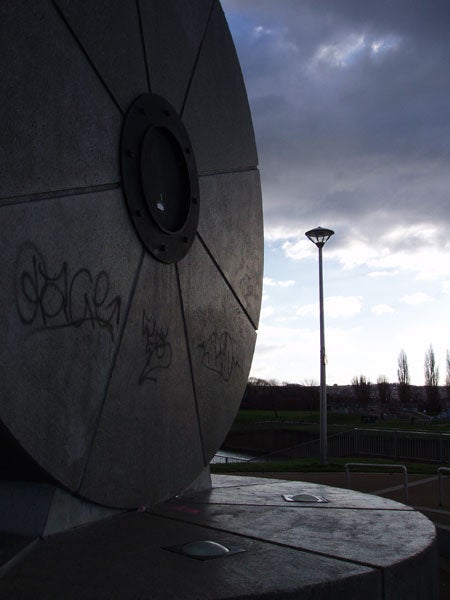Olympus µ (Mju) Digital 500 – Digital Camera Review
Olympus µ (Mju) Digital 500 – Digital Camera
The Olympus Mju brand has pretty much become a household name, but does the company’s latest top-of-the-range digital Mju live up to expectations? Cliff Smith finds out.

Verdict
Key Specifications
- Review Price: £219.00
The µ (Mju) digital series (sold as Stylus in the USA) has been very good for Olympus. With six cameras in the current range, from the pretty little µ-mini Digital S to this, the µ Digital 500, they offer a combination of style, quality and robust construction that few other manufacturers can match. For customers looking for a fashionable camera that they can slip into a pocket the µ cameras are an ideal choice. They are not the cheapest cameras on the market, but for what they offer they are quite reasonably priced. The 500 comes in at just under £220, which is somewhat above average for a five megapixel compact but it is the top-of-the-range model and offers some impressive features such as its aforementioned large CCD sensor and a huge 2.5in LCD monitor. In common with the rest of the range, it features a high quality 3x optical zoom Olympus lens and a tough all-metal, weatherproof body designed to resist water splashes from all directions.
From the outside, the µ 500 simply oozes style. It is one of the most attractively designed cameras on the market, with a simple elegant shape and sleek matt silver finish. The lens is housed behind a powered sliding cover that is flush with the front of the camera, and there are no protruding edges or corners to catch on your pocket lining.
Turning to the back, the layout reflects the same simple elegance of design with only the bare minimum of controls, which is just as well since there isn’t a lot of room for anything next to that large LCD. However, there’s enough space for a small mode dial, the zoom rocker, the menu navigator and a quick view button, but that’s all it needs.
The mode dial is basically a milled wheel that is turned from the side, and despite its diminutive size operating it isn’t a problem. It has only four positions; shooting, movie mode and playback, plus an option to select the album into which pictures will be recorded, a feature which to be honest would probably have been better placed in the menu system.
Olympus menu systems have something of a reputation for being unnecessarily complex and difficult to use, but that is not the case with this camera. The most often used options, including exposure compensation, white balance and picture quality, can all be found with just two button presses, with less frequently used options such as card formatting and drive mode located further down the list.
Since this is strictly a snapshot camera features such as manual exposure or adjustable contrast have been jettisoned in favour of simplicity, but it still has spot metering, spot focusing, adjustable ISO (64-400) and a panorama assist mode. It also has a live histogram function, although how many of this camera’s typical users will ever bother with that is open to question.
The key feature of the µ 500 is its LCD. Olympus’s new HyperCrystal technology is a innovative type of LCD design in which the liquid crystal molecules are laid out in a radial pattern. The advantage of this is that the image on the screen can be viewed clearly from up to 80 degrees on all sides, and it also works well in bright sunlight. This means that you can hold the camera above your head or at virtually any angle and still clearly see what is on the screen.
The LCD possesses 215,000 pixels, giving it a superbly sharp picture, and its 25ms response time helps keep motion smearing down to a minimum. It is without doubt one of the best monitor screens I’ve seen on any digital camera. This is just as well, because the µ 500 has no optical viewfinder. This might not sit well for a number of users who like to frame their subjects with the LCD off in order to increase battery life.
General handling is very good indeed. The camera is small and light, but not so small that it’s difficult to operate. The matt finish makes the camera easy to grip, and there’s a small ridge on the front that helps you maintain a firm purchase too. Thankfully Olympus has dropped its irritating manual sliding cover-come-power switch arrangement for this camera. Since the camera has no manual modes, creative control consists of choosing one of the 20 different scene modes, or simply leaving it in program auto.
In operation, the µ 500 is relatively slick. It has a start-up time of under a second, and a shot-to-shot time of about four seconds in the highest quality SHQ mode which falls to just one and half seconds in the slightly lower quality HQ mode. Even with the flash on it doesn’t appear to slow down at all. In continuous shooting mode it can fire off six SHQ shots in just under ten seconds, but then has to wait for about six seconds before it can shoot again. In continuous shooting at HQ quality it can keep shooting a frame every 1.2 seconds without pausing until the memory card is full, which in fact exceeds the performance claimed in the specifications.
Focusing is quick and generally very accurate, although the multi-point iESP AF system sometimes hunts around in macro mode and can lock onto the wrong target, but switching to spot autofocus for close-up shots solves that problem. The camera has no AF-assist illuminator, but still copes well with low-light situations. In addition, the monitor brightness increases to help with framing low-light shots.
Image quality is of course the most important consideration for any digital camera, and here the µ 500 scores very well. Olympus exposure systems have always been excellent, and the Digital ESP meter in this camera is no exception. It copes admirably with a wide range of exposure conditions, providing good shadow and highlight detail with only a a touch of noticeable fringing that occurs with many high resolution, optical zoom compacts. Colour reproduction is outstanding, with rich vibrant tones across the whole spectrum. There is noticeable image noise at 400 ISO, but not really more than one might expect.
It’s hard to find any fault with this camera, but inevitably there is one slight niggle. The battery and card hatch has no latch, and on our test sample it came open very easily. There was no danger of the card or battery falling out since they both have their own catches, but it is a small design flaw in this otherwise superb little camera.
”’Verdict”’
The Olympus µ Digital 500 is a superbly designed, well-made camera (apart from the battery and card hatch) with very good overall image quality. It looks the part, handles well, shoots quickly, and although it lacks an optical viewfinder it does offer arguably the best LCD screen of any compact digital camera. If you’re looking for a compact, powerful and stylish digital camera then you should certainly consider this model.
(table:mjuspec)
”A range of test shots are shown over the next two pages. Here, the full resolution image has been reduced in size for bandwidth purposes, and a crop (taken from the original full resolution image at Adobe ImageReady jpg quality 60) follows each image in order for you to gain an appreciation of the overall quality. The next page consists of resized images (to Adobe ImageReady jpg quality 50) in order for you to evaluate the overall exposure.”


”’The µ 500 captures an impressive amount of fine detail as well as subtleties of shade and tone.”’
(f4.6, 1/250, ISO-64)
—-


”’This outdoor macro shot with flash is slightly over exposed, but no highlights have been lost so the problem could be corrected by manipulation.”’
(f16, 1/100, ISO-250)
—-


”’This indoor shot shows the range and coverage of the µ 500’s built-in flash, both of which are excellent, especially considering its small size.”’
(f3.1, 1/30, ISO-400)
—-


”’Although the sky is burned out, a certain degree of coloured fringing around high-contrast edges can be seen – a problem that is not uncommon in high-res, optical zoom compacts.”’
(f3.1, 1/50, ISO-64)
—-


”’The µ 500’s lens copes extremely well with respect to lens flare. There is only a tiny amount caused by the glare from this car’s bumper.”’
(f9, 1/125, ISO-64)
”This page consists of resized images (to Adobe ImageReady jpg quality 50) in order for you to evaluate the overall exposure.”

”’Although it is designed as a snapshot camera, the µ 500 is versatile enough to allow some creative shooting.”’
(f9, 1/125, ISO-64)
—-

”’Fill-in flash is subtle and perfectly balanced to the overall exposure, creating a well exposed shot.”’
(f3.1, 1/80, ISO-64)
—-

”’Colour reproduction is perfect, and even large areas of bold primaries don’t appear to cause any problems for the µ 500’s white balance.”’
(f3.6, 1/400, ISO-64)
—-

”’The Digital ESP exposure system makes easy work of high-contrast subjects, producing perfectly exposed shots.”’
(f5.2, 1/200, ISO-64)
Trusted Score
Score in detail
-
Value 8
-
Image Quality 8
Features
| Camera type | Digital Compact |
| Megapixels (Megapixel) | 5.4 Megapixel |
| Optical Zoom (Times) | 3x |

